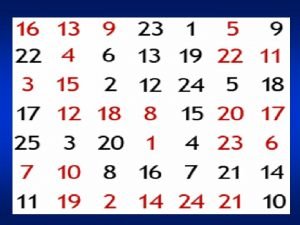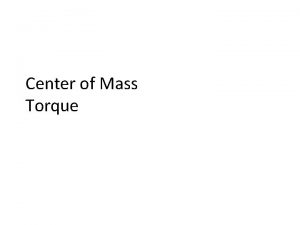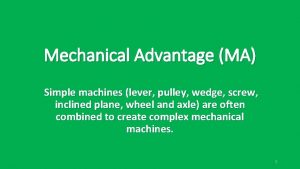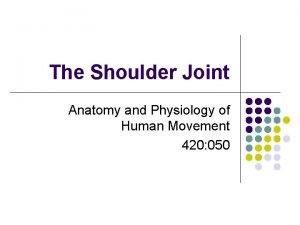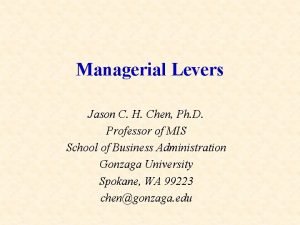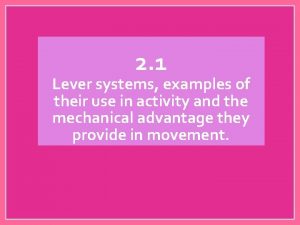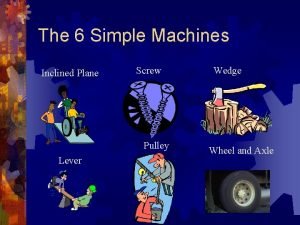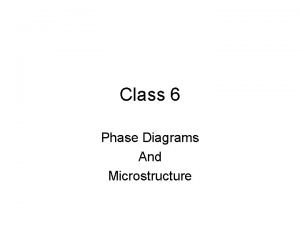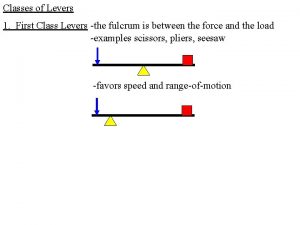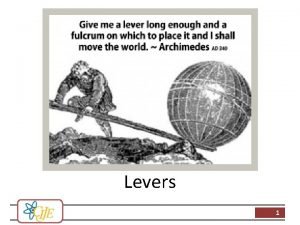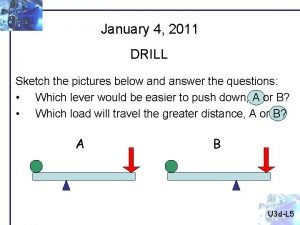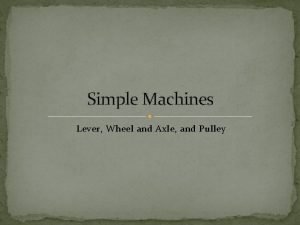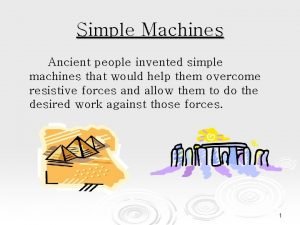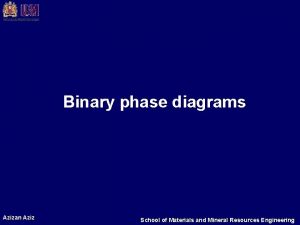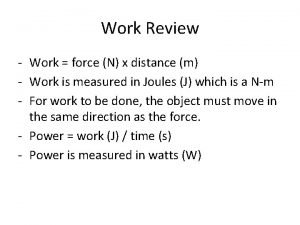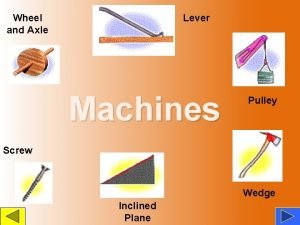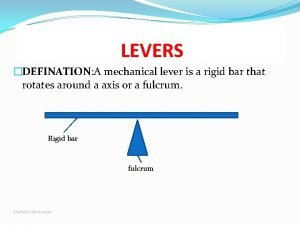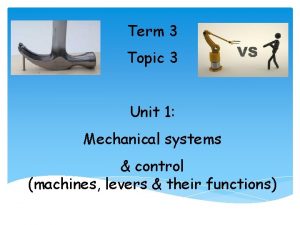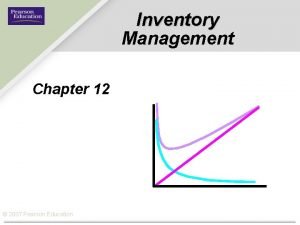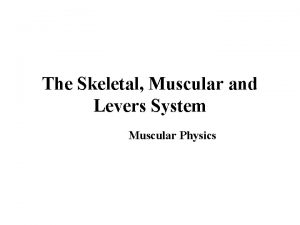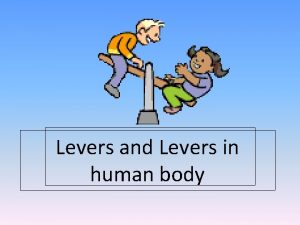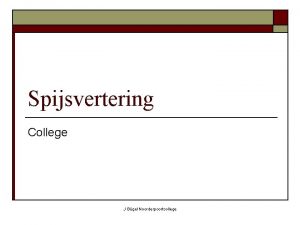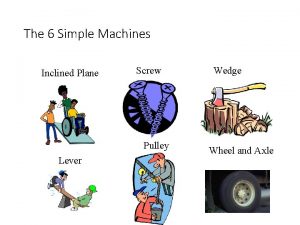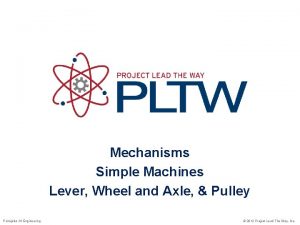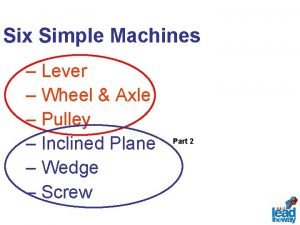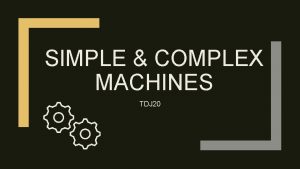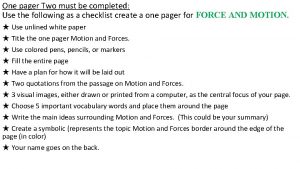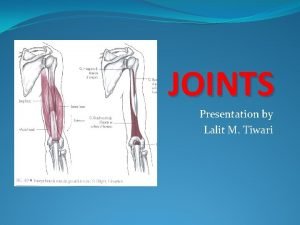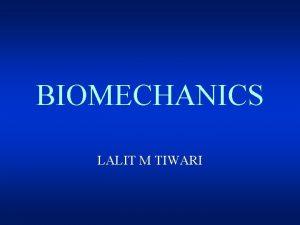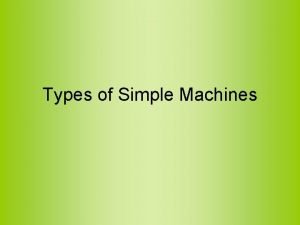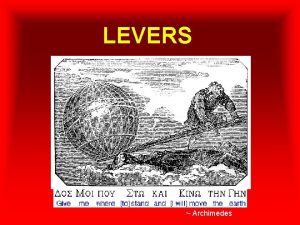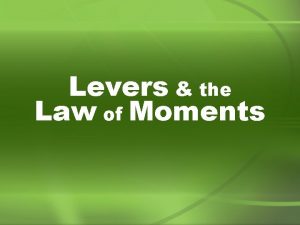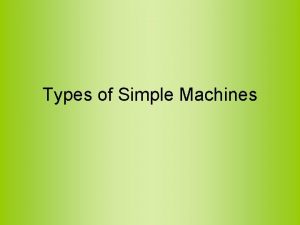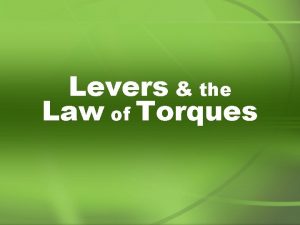LEVER LALIT M TIWARI A lever is a



















































- Slides: 51

LEVER LALIT M TIWARI

• A lever is a rigid object used to make it easier to move a large load a short distance or a small load a large distance. • Lever is a rigid bar which can rotate about a fixed point when a force is applied to it to overcome a resistance. • Muscles and bones act together to form levers. A lever is a rigid rod (usually a length of bone) that turns about a pivot (usually a joint). Levers can be used so that a small force can move a much bigger force. This is called mechanical advantage.

• A lever is a rigid bar that moves on a fixed point called the fulcrum, when a force is applied to it. • The applied force, or effort, is used to move a resistance, or load. In the human body, the joints are fulcrums, and the bones act as levers. Muscle contraction provides the effort that is applied at the muscle’s insertion point on the bone. The load is the bone itself, along with overlying tissues and anything else you are trying to move with that lever.

• There are four parts to a lever – lever arm, pivot, effort and load. In our bodies: • bones act as lever arms • joints act as pivots of fulcrum • muscles provide the effort forces to move loads • load forces are often the weights of the body parts that are moved or forces needed to lift, push or pull things outside our bodies.

• Types of Lever

• First class lever system • In a first class lever system, the fulcrum is the middle component and lies between the effort and load. Examples of a first class lever system in the body are rare as few exercises utilise a first-class lever system although extension (straightening) at the elbow is one example. Extension at the elbow can be seen during a throwing action or tennis stroke. Hyperextension of neck, planter flexion.


• In a first-class lever, the effort is applied at one end of the lever and the load is at the other, with the fulcrum somewhere between. seesaws and scissors are first-class levers. First-class leverage also occurs when you lift your head off your chest. Some first-class levers in the body operate at a mechanical advantage (for strength), but others, such as the action of the triceps muscle in extending the forearm against resistance, operate at a mechanical disadvantage (for speed and distance).


• During extension of the elbow, the effort is created by the triceps via its point of insertion on the ulna, so is a first class lever system.




• Second class lever system • In a second class lever system, the load is the middle component and lies between the fulcrum and the effort. • In a second-class lever, the weight (resistance) is located between the axis (fulcrum) and the force • The most obvious example is a wheelbarrow, where a weight is placed in the bed of the wheelbarrow between the wheel (axis) and the hands of the person using the wheelbarrow (force). In the human body, an example of a second-class lever is found in the lower leg when someone stands on tiptoes


• In a second-class lever, the effort is applied at one end of the lever and the fulcrum is located at the other, with the load between them. A wheelbarrow demonstrates this type of lever system. Second-class levers are uncommon in the body, but the best example is the act of standing on your toes. All second-class levers in the body work at a mechanical advantage because the muscle insertion is always farther from the fulcrum than the load. Second-class levers are levers of strength, but speed and range of motion are sacrificed for that strength.



• Third class lever system The majority of movements in the human body are classified as third class lever systems. In a third class lever system, the effort is the middle component and lies between the fulcrum and load. In a third-class lever, the effort is applied between the load and the fulcrum. Dorsi flexion

• Most skeletal muscles of the body act in thirdclass lever systems. An example is the activity of the biceps muscle of the arm, lifting the distal forearm and anything carried in the hand. Thirdclass lever systems permit a muscle to be inserted very close to the joint across which movement occurs, which allows rapid, extensive movements (as in throwing) with relatively little shortening of the muscle. Muscles involved in third-class levers tend to be thicker and more powerful


• A third-class lever might be the elbow joint: when lifting a book, the elbow joint is the fulcrum across which the biceps muscle performs the work. • In a third-class lever, the most common in the human body, force is applied between the resistance (weight) and the axis (fulcrum)



Class II

Class III

























 Lalit khanna
Lalit khanna Harish tiwari sir
Harish tiwari sir Dr shaleen agarwal
Dr shaleen agarwal Steve greeley
Steve greeley Tiwari groups
Tiwari groups Link tree vishal tiwari
Link tree vishal tiwari Garima tiwari acp delhi police
Garima tiwari acp delhi police Microteaching objectives
Microteaching objectives Torque center of mass
Torque center of mass The lock
The lock Wheel and axle principle in extraction
Wheel and axle principle in extraction Pulley lever wedge
Pulley lever wedge Lever
Lever Managerial lever
Managerial lever 1st class lever examples in the body
1st class lever examples in the body Examples of third class lever machines
Examples of third class lever machines Inverse lever arm rule
Inverse lever arm rule Brachioradialis lever class
Brachioradialis lever class Biomechanical levers
Biomechanical levers The three types of levers
The three types of levers 1nd class lever
1nd class lever Levers and linkages
Levers and linkages Distance multiplier lever
Distance multiplier lever Ima wheel and axle
Ima wheel and axle Who invented simple machines
Who invented simple machines Eutectoid
Eutectoid Eutectic and eutectoid reaction
Eutectic and eutectoid reaction Example of lever
Example of lever Se lever passé composé
Se lever passé composé How does a screw make work easier
How does a screw make work easier Citation sur le lever du soleil
Citation sur le lever du soleil Defination of lever
Defination of lever How does a pulley work
How does a pulley work Defination of lever
Defination of lever Linked second class levers
Linked second class levers Eutectic and eutectoid reaction
Eutectic and eutectoid reaction What is the primary lever to reduce cycle inventory
What is the primary lever to reduce cycle inventory Bones and muscles
Bones and muscles Solid solution example
Solid solution example Pulley examples in human body
Pulley examples in human body Noorderpoortcollege
Noorderpoortcollege Characteristics of motion
Characteristics of motion Sieve tray tower
Sieve tray tower Elles se sont levées
Elles se sont levées Example of first class lever
Example of first class lever Two inclined planes joined back to back
Two inclined planes joined back to back 1st class pulley
1st class pulley Schematic table
Schematic table Lever wheel and axle pulley
Lever wheel and axle pulley Fishing rod class 3 lever
Fishing rod class 3 lever Forces one pager
Forces one pager Enter bolus exit balance
Enter bolus exit balance




